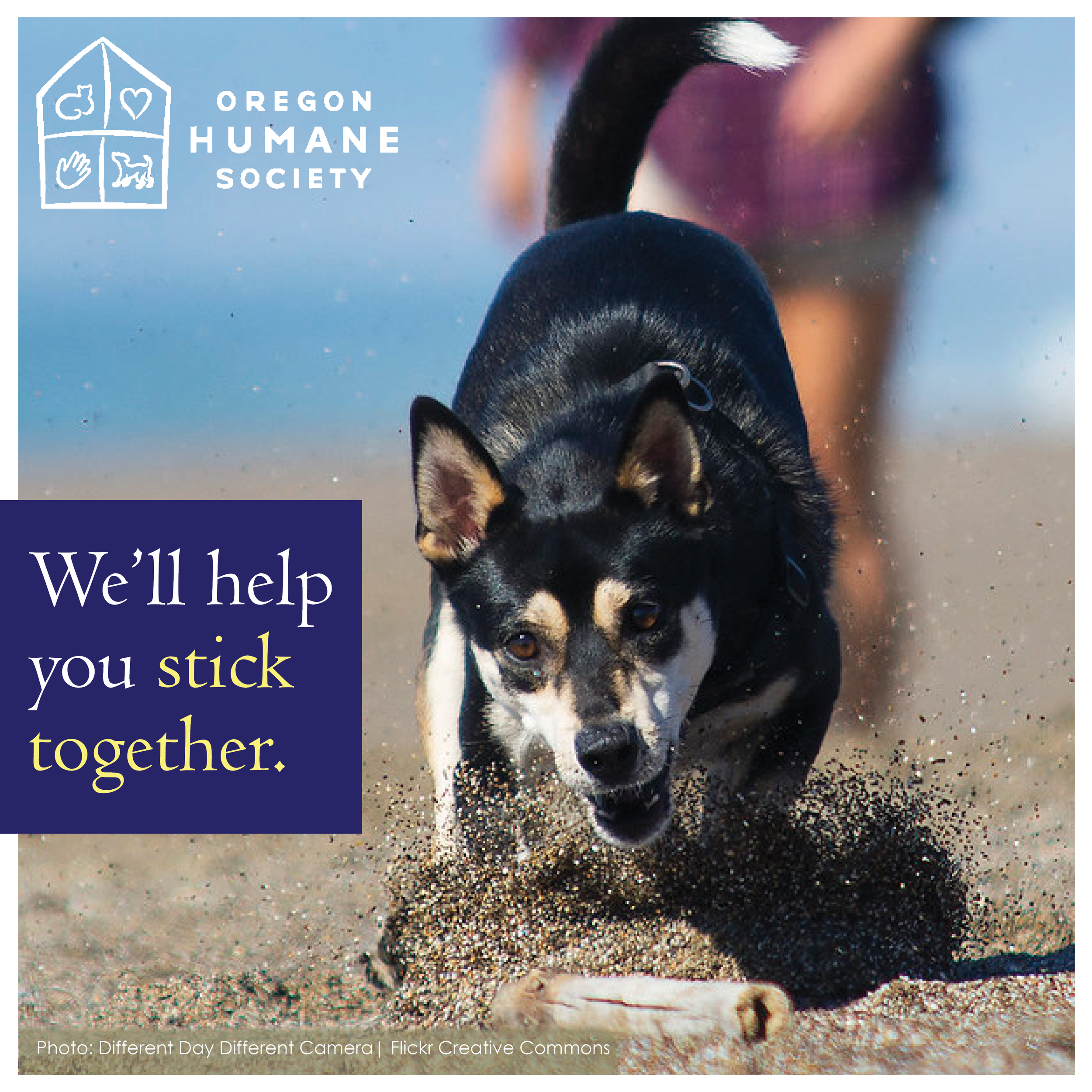
STRATEGIC COMMUNICATION PORTFOLIO
Oregon Humane Society Marketing Plan
Developing a strategy for increasing pet adoption and retention among millennials for J616: Strategic Communication Marketing at the University of Oregon.
CONTEXT
For our final project for J616: Strategic Communication Marketing at the University of Oregon’s School of Journalism and Communication, my team and I constructed a hypothetical marketing plan for the Oregon Humane Society (OHS). Originally we were inspired by slightly sensationalistic news articles that were painting a grim picture of pandemic pets being surrendered (given back to shelters) across the US due to a return to in-person work. When we dug into this topic, we found that the situation was much more nuanced.
While it’s likely that some families impulsively adopted a pet that they were unable to care for once stay-at-home orders lifted, this was not actually a nationwide epidemic (at least, we couldn’t find any evidence of it at the time). In fact, OHS reported an overall decrease in both adoptions and surrenders over the course of the pandemic. However, OHS reported an increase in surrenders specifically due to the high costs of veterinary bills. This indicated that families were only giving up their pets when they encountered severe financial hardships—which made sense, given the pandemic’s widespread economic impacts.
Even though the original problem we hoped to solve turned out to be a non-issue, we decided to stick to our topic after an audit of OHS’s website and social media. While they are undoubtedly providing important services for pets and their families, they did not seem to be communicating in the modern, authentic way that Millennials (Gen Y) and Zoomers (Gen Z) would respond the best to. Plus, our research indicated that there was a need for more resources and support for pet-families who were facing financial hardships. So, there was still plenty to address!
Emotive headlines like this painted a grim picture of pets being impulsively adopted and quickly discarded. Our team’s research indicated the situation was more nuanced, but we still decided to design a hypothetical campaign for Oregon Humane Society.
STRATEGY
“Our campaign will position OHS as a crucial source of information, connection, low-cost veterinary services, and other resources for new and prospective pet owners—particularly our priority demographic: Millennials.”
More specifically, we decided to zero in on a segment that we dubbed “The Adultiest Millennials.” The Adultiest Millennials have the financial stability and schedule flexibility to add a pet to their families. They will be drawn to an organization that positions itself as the ethical option, opening the door for a values-forward organization like OHS. (Our market research on Millennials proved useful when I was contracted to develop a marketing plan for Our Just Future.)
We also made our objectives as specific as possible: “We will prioritize audience engagement and outcomes—namely, increasing adoption rates and maintaining or improving pet retention rates for 24 months after the campaign’s launch. This timeframe is crucial because projections indicate families will still be recovering financially from the pandemic for at least three years… and therefore may still be forced to surrender a pet for financial reasons.” Tracking outcomes and course-correcting as needed was also a key element of our marketing plan.
Our full marketing plan lays out the whys and hows in greater detail, but here’s a basic overview of our prescribed messaging:
Representing life with pets in an unvarnished manner. This will serve to manage expectations, align with Millennials’ interest in authenticity and humor in advertisements, and ultimately make OHS more likeable.
Resonate with, and reinforce, Millennials’ loyalty to their nontraditional households.
Making OHS top-of-mind for any needs that pet owners may have.
We proposed utilizing the following channels and methods:
Social media: With an emphasis on Instagram posts, stories, and reels, we advise creating content that conveys the joys of pet ownership in a perfectly imperfect manner. Utilizing micro-influencers could enhance outcomes. Audience targeting will also further our goal of reaching people like Penny and Darren. Specifically, OHS should use paid posts to target people aged 25-40 who are currently employed in Oregon and southwest Washington.
OHS website: Building a website forum where users can ask OHS staff questions.
Multimedia storytelling: Developing a podcast and video series addressing common questions and experiences with pet ownership.
Fur Baby Finder: As a nod to the “dating app generation,” we also recommend developing the Fur Baby Finder. With this app, prospective pet owners can input information about their lifestyles and receive a customized list of suitable fur babies.












DESIGN
“Humor based on the playful nature of life with pets will imbue much of the content, aligning with millennials’ preference for novel and authentic experiences.”
My teammate, Brint Ingersoll, developed the brand standards for our campaign (including font selection and color palette; the latter was rooted in his research about color theory) and designed the layout of the marketing plan document. Utilizing this strong foundation Brint built, I created a series of graphics for a hypothetical social media campaign highlighting the joys of a perfectly imperfect life with pets.
I sourced images from friends and Flickr Creative Commons, prioritizing images that depicted mischief (like cats climbing a window screen), messy-but-adorable moments (like being covered by a baby and a cat), and life milestones (like my teammate Ryan Spinks’ partner graduating law school). I kept the rest of these graphics simple, letting the photos speak for themselves—plus a short quip that reinforced the meaning of the image. Other graphics position OHS as a one-stop-shop for all pet-related needs, underscoring one of our campaign objectives of making OHS top-of-mind for pet owners.


